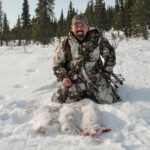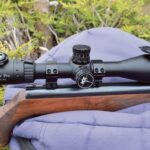Handguns are popular firearms around the world for several reasons. They are effective at close range, making them convenient for various uses. Below are the basic things you need to know when choosing the best pistol for your desired activity.
Table of Contents
What Is a Pistol?
A pistol is a type of firearm that you can hold with one hand and fire. It typically has a short barrel and a small grip, making it easier to handle and control. Military personnel, law enforcement officers, and civilians use them for multiple activities, including self-defense, recreation, and competitive shooting.

Types of Pistols
You should know there are various types of pistols. We can classify pistols in different ways; one of the most common is the single-action and double-action classification. The two differ as follows:
- Single-Action: They require you to manually cock the hammer before firing each shot. The trigger only releases the firing pin.
- Double-Action: You can shoot the gun by manually clocking the hammer or pulling the trigger. The trigger is long and can cock and release the hammer.
You can also classify pistols/ handguns as either semi-automatic or revolvers. The two types work as follows:
- Semi-automatic: They have a single chamber, use recoil to eject the spent casing, and load a new round.
- Revolvers: Have multiple chambers using a rotating cylinder to hold and fire the rounds.
There are Different Calibers
All pistols are not equal. A caliber refers to the barrel’s diameter and the bullet’s size. The most common are .22 LR, 9mm, .45 ACP, and .38 SPL. Each type will impact the target differently, so you should always consider the caliber when buying a gun.
Choosing the best pistol for you will depend on your intended use. For example, a .22 LR is suitable for target shooting, while a .45 ACP is more suitable for self-defense. Higher calibers typically have a bigger impact.
What are the Parts of a Pistol?
A pistol has several working parts. The main ones include the following:
- Frame: It is the fundamental structure of the gun that holds the other parts.
- Trigger: It initiates the firing sequence. Pulling the trigger releases the firing mechanism and ignites the gunpowder to fire the projectile.
- Barrel: A long, strong tube through which the bullet travels after you pull the trigger. It creates the velocity and directs the projectile toward the target.
- Slide: Houses the firing mechanism, extracts and ejects spent cartridges, and moves back and forth during the firing cycle to load and cock the gun.
- Cartridge: A self-contained unit with a primer, gunpowder, and a bullet. Cartridges are loaded into a pistol’s chamber and ignited by the hammer to fire the shot.
- Hammer: It strikes the firing pin to ignite the primer and fire the cartridge.
- Magazine: Holds and feeds ammunition into the pistol. They come in different sizes and capacities and are essential for proper firearm function.
Types of Ammunition
Pistols can fire various types of ammunition, including ball, hollow-point, and jacketed hollow-point. Each class is suitable for different uses. You should be careful with the bullets you use to ensure you don’t cause damage you didn’t intend.
Ball ammunition is the most common and is suitable for target shooting and training. Hollow-point and jacketed hollow-point are designed for self-defense and hunting, as they expand upon impact, causing more damage to the target.
How a Pistol Works (Semi-Automatic)
A pistol fires a bullet by using a combination of mechanical and chemical processes. Here are the steps of how a gun works:
- Loading: Insert a magazine containing cartridges into the pistol grip.
- Chambering: Pull back the slide to load the first cartridge into the chamber.
- Firing: Pulling the trigger releases the hammer or striker that hits the firing pin, which then hits the primer in the cartridge. It ignites the gunpowder and creates a high-pressure gas that propels the bullet from the barrel toward the target.
- Extracting: After firing, the slide returns, and the extractor claw removes the spent cartridge case from the chamber.
- Ejecting: The ejector pushes the spent cartridge case out of the ejection port on the side of the slide.
- Cocking: The slide moves forward, picking up a new cartridge from the magazine and loading it into the chamber, cocking the pistol and making it ready to fire again.
- Repeat: You can fire repeatedly until the magazine is empty.
Understanding how a pistol works is essential for safe and effective firearm use. Following all safety rules and guidelines when handling a gun is crucial.
Safety and Maintenance
Safety is of utmost importance when handling firearms. Keep the gun pointed in a safe direction, and keep your finger off the trigger until ready to fire. Always treat the weapon as if it is loaded. Additionally, store your pistol in a secure location away from unauthorized persons.
Like any machine, guns require regular maintenance to function properly. Clean your firearm after each use before storage and perform routine inspections to ensure all parts work correctly. Proper care will increase the lifespan of your weapon and ensure that it functions when you need it most.
Understanding Pistols
Pistols are fascinating tools that use a combination of mechanical and chemical processes to fire a bullet. They can serve various purposes, including self-defense, sport shooting, and law enforcement. Understanding how they work and handling firearms responsibly by following all safety guidelines and regulations is essential in ensuring you use them safely and effectively.















































![Air gun 101: The differences between .177 & .22 – Which jobs they do best ? [Infographic]](https://airgunmaniac.com/wp-content/uploads/2024/11/1773-150x150.jpeg)